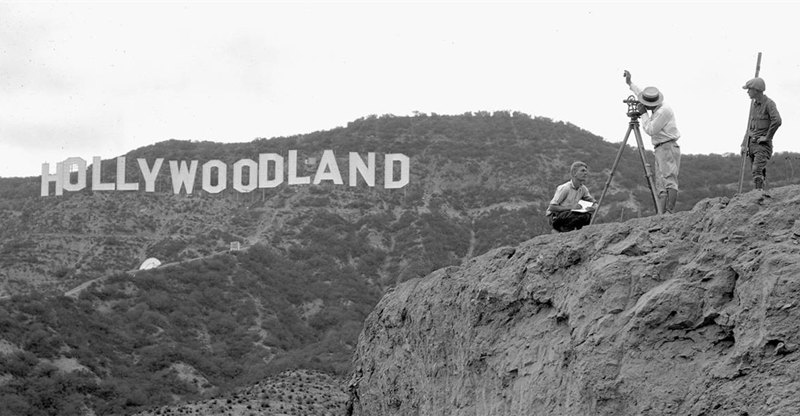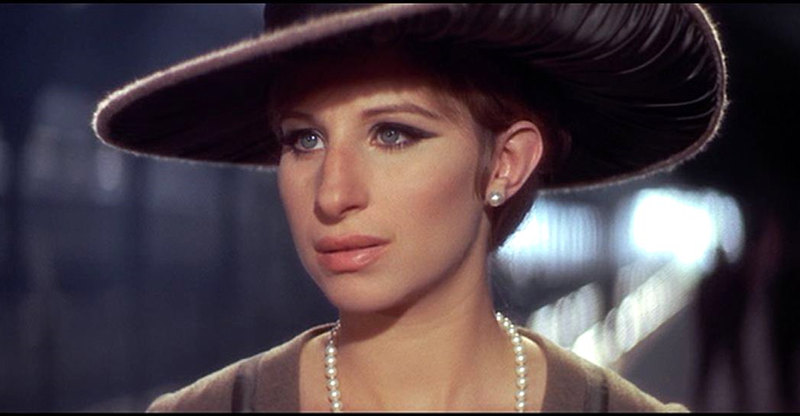First, a word of explanation. “The Polar Express” is one of those computer animations that try to look as photorealistic as possible in their representations of the actual world. As a result, the humans appear almost but not quite true, like wax figures in a museum come to life. I’ve never understood this concept, which makes everyone look kind of creepy to me. If the 3-D animation technique for “Polar Express” was supposed to save money as opposed to using live actors, it apparently didn’t work. This 2004 production cost about $150,000,000 to make. If the animation was supposed to provide us some visual treats we couldn’t otherwise get with live action, it doesn’t do any more than one of today’s comparable live-action fantasies does. If it was supposed to open our minds better to the world of imagination, it does so at cross purposes. Would “Willy Wonka” or “Harry Potter” have been any better done in animation than in live action? I doubt it. When I finished watching “The Polar Express,” I remember having been intrigued by the visuals but having wondered why it was done as a cartoon at all when live action could have accomplished the same thing without looking so…odd. Therefore, please, temper my remarks with this preliminary grousing in mind; and understand that the animation will probably not bother most anyone else.
The movie is based on a short, illustrated children’s book by Chris Van Allsburg, and it was directed by Robert Zemeckis, the fellow who gave us such spectacularly creative delights as “Back to the Future,” “Who Framed Roger Rabbit,” “Forrest Gump,” and “Contact,” all of them filled with fascinating characters and glorious sights for the eye. In “Polar Express,” however, the director stretches (an unkinder soul would say bloats) a simple story idea with so many visual effects that the characters get rather lost in the proceedings.
The animation technique produces varied results. The scenery and surroundings are exquisite, imaginatively rendered in every detail, often looking like one of those Christmas globes with the snow swirling around inside; and from everything I can ascertain, the animation does a good job capturing the look and feel of the paintings in Van Allsburg’s book. It’s the people who inhabit this world who look artificial in a spooky sort of way. The filmmaking process that was used requires live actors to perform their roles and then computer animation to duplicate their actions. It’s the modern equivalent of the early rotoscoping done by pioneer animators in the days of silent films. Although it’s quite a bit more advanced now, the basic idea is the same. What I always have to ask is, if live actors perform the parts, why not make it a live-action movie? What more does animation do to make something a fantasy? Is the mere act of watching drawings instead of real people oblige us to believe all the more in a film’s make-believe? Well, it may, and if it works for you, more power to the filmmaking.
The plot, what little there is of it, concerns a young boy at an age where he’s about to lose his belief in Santa Claus and the magic of Christmas. In this most crucial year of his life, the Polar Express shows up at his doorstep one Christmas Eve to convince him there really is a Santa. Other children of a similar age and with similar feelings of disbelief fill the train. From here, the movie presents a sweet and moving fable of regaining (or retaining) one’s faith in the Christmas spirit, as the boy learns to be kind to other people and to never lose his power of imagination. No complaints there.
Tom Hanks stars in the movie, and stars in the movie and stars in the movie. He is the voice behind most of the main characters, which works well for several reasons. First, he’s a fine actor and provides good voice characterizations for, among others, the hero’s father, the train conductor, a mysterious hobo, and Santa himself. Second, having Hanks voice so many of the characters makes it feel all the more like storybook time, as though one person alone were telling the tale, which, in fact is the case, as Hanks is supposed to be the boy grown up and looking back on his own childhood.
The other characters are ably, if not always so colorfully, voiced as well: A little girl that the boy befriends is played by Nona Gaye; the boy’s sister and mother are played by Leslie Zemeckis; a shy, lonely boy is played by Peter Scolari; and, best of all, a know-it-all kid is played by Eddie Deezen. You’ll recognize Deezen’s distinctive voice instantly from things like “1941” and “WarGames.” He practically saves the day by being the most unique and entertaining voice of all the characters in the movie; every time he appears, the movie livens up.
The action of the story takes places almost entirely on the train and at the North Pole in a series of short episodes. These brief segments involve the boy in various encounters and adventures, none of which are particularly involving because of their brevity. After a somewhat slow start, the episodes begin to come along rather quickly, and it’s shortly afterwards that we realize there’s not going to be much more to it than that; nothing lasts long enough to develop much tension, and there aren’t many clear transitions between events to sustain an engrossing story line.
Possibly the rapid succession of incidents is intended to remind us of a child’s dream, because certainly we’re never convinced the boy is awake or asleep while all this is going on. Still, I found my mind wandering frequently, maybe indicating I’m not a child anymore.
Several of the segments have a rousing spirit, though, and they display a verve sometimes lacking in the rest of the film. There is a scene with dancing waiters and the song “Hot Chocolate” that comes alive in an energetic, Monty Pythonesque way; there’s a stunning shot of an eagle flying through a gorge that is lovely enough to frame; there’s a sequence where the train is sliding down a roller-coast track and then slipping sideways on an expanse of ice that is really quite harrowing; and there is a passage set in a roomful of puppets that is scary in the way only puppets and marionettes can be scary.
But these instances of beauty and excitement are offset by too many songs that seem less than memorable (“Believe” being the main one); too much background music that tries to be uplifting and inspirational as comes off gushy; too much pacing that is awkward and herky-jerky; too much that is supposed to feel surreal but only seems tedious; too much that is simply sentimental; and too little storyline to tie it all together.
The movie might better be called “The Bipolar Express,” with so much that is sweet and light on the one hand and so much that is tiring and humdrum on the other. I have no doubt most kids and many adults will love it, even if this Scrooge came away with mixed feelings.
Video:
One could hardly fault any part of the video presentation; it’s as nearly perfect as current technology can make it. The engineers have retained the movie’s 2.40:1 screen dimensions in an anamorphic transfer. A high bit rate ensures a clean, clear picture quality with nary a digital artifact in sight. Colors are quite natural (for a cartoon or for real life), rich and lush, with black levels intense enough to showcase the other hues and enhance overall definition. No grain, no haloes, almost no moiré effects; beautiful to look at.
Audio:
When the train first rumbles past the boy’s bedroom window, the effect is enough to rattle the rafters. While the disc’s Dolby Digital 5.1 soundtrack is nearly as perfect as the disc’s video, the dynamic range does pose a minor problem. Turn up the sound to hear the dialogue easily, and you’ll occasionally get a deep bass and transient impact so loud it’ll knock your socks off (if that’s your idea of a good time). Still, the audio is well focused, extremely wide ranging, and nicely spread out across the front of the listening area. The surrounds are used sparingly and subtly, but when they come into play they are effective. This is sound with air and space around the music and effects, producing a most realistic aural setting for the movie.
Extras:
I appreciate WB dedicating the whole of disc one to the movie, thus allowing more space for a high-bit-rate transfer. So, all we have on the first disc are the feature film; a widescreen theatrical trailer; twenty-four scene selections, but no chapter insert; and English, French, and Spanish spoken languages and subtitles. No audio commentaries, either.
Disc two is devoted to the bonus materials, which like the movie I found only so-so. First up, there’s a four-minute segment, “You Look Familiar: The Many Polar Faces of Tom Hanks,” explaining why Hanks played so many roles in the film. After that is the main documentary, “A Genuine Ticket to Ride,” lasting about twenty-five minutes and covering the usual topics: “Performance Capture,” “Virtual Camera,” “Hair and Wardrobe,” “Creating the North Pole,” and “Music.” Then there’s a five-minute bit, “True Inspirations: An Author’s Adventure,” profiling the work of author and artist Chris Van Allsburg; followed by four minutes of singer Josh Groban performing the song “Believe” at the Greek Theatre and another four minutes taking us “Behind the Scenes of Believe” and into the recording studio.
Finally, we have a kids’ game, “Polar Express Challenge,” in which I lost interest fast; about two minutes of Christmas memories, “Meet the Snow Angels,” reminiscences from various of the filmmakers; and a seven-minute, never-before-seen deleted musical scene with Smokey and Steamer, the train’s engineers, done up in partial animation. A “THQ” PC game demo with two playable levels (which apparently requires a DVD-ROM drive to realize) and a DVD-ROM Web link complete the package. Oh, and there are the usual Easter eggs along the way, so look for the S’s.
Parting Thoughts:
As a counterbalance to my curmudgeonly reactions, let it be known that the Wife-O-Meter loved the movie. She thought the stop-and-go action was much like the way a child thinks, the colors and excitement and adventure were right up a child’s alley, the themes were moving, and the characters were fun. She is convinced that children would love it as much as she did. Fair enough. It undoubtedly is an enchanting movie for children, and it even began getting to this cranky adult.
Now, indulge me a moment longer. Strangely, perhaps, I saw many similarities in this film and, of all things, Steven Spielberg’s “1941.” “What’s that?” you say. Yes, in the movie’s episodic construction, its fitful, irregular execution, its musical interludes and march music, its Eddie Deezen character, and its elaborate special effects, it reminded me of Spielberg; which may be no coincidence given that Zemeckis worked extensively with Spielberg early in his career and was a wizard at special effects. And like “1941” the sum of the many elements of “Polar Express” don’t quite add up to as much as they should.
Nonetheless, “the spirit of Christmas lies in your heart.” Just as the Conductor says, “One thing about trains: It doesn’t matter where they’re going; what matters is deciding to get on.” If you believe strongly enough, you can do anything or be anything you want. It’s hard to knock so winsome and earnest a notion.


